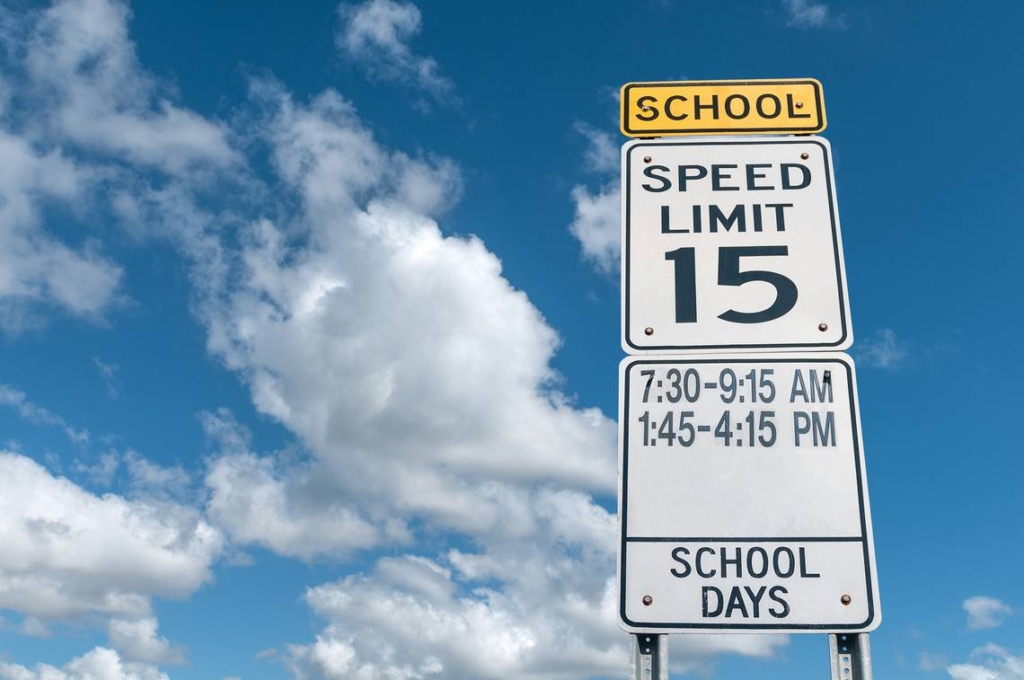When the school year begins, traffic around schools and neighborhoods tends to increase significantly, creating congestion during peak hours. This happens for several reasons and brings with it new driving responsibilities. Whether it’s morning drop-offs, afternoon pick-ups, or busy intersections, drivers should be aware of the crucial role they play in school zone safety.
Why Does Traffic Spike Around Schools?
- School Drop-offs and Pick-ups: Parents driving their children to and from school contribute to a spike in traffic around school zones, especially during the morning drop-off and afternoon pick-up times. This peak congestion during drop-off and pick-up times requires extra patience and attention from all drivers.
- School Buses on the Move: School buses pick up and drop off children, which can cause delays as they stop frequently, sometimes blocking traffic temporarily. Pennsylvania’s school bus stopping laws emphasize that all drivers must stop at least ten feet away from a bus when it has its red lights flashing and stop arm extended. School buses transport 1.5 million children across Pennsylvania daily, totaling approximately 400 million miles each year! While the stop-starting slows down traffic, it is a critical part of safety.
- Increased Pedestrian and Bicycle Traffic: More students walking or biking to school means more people on the streets, which can slow down traffic, particularly in neighborhoods near schools. It’s crucial to remain vigilant in these areas to safeguard children crossing streets or walking along sidewalks.
- School Events and Public Transportation: Special events, like after-school activities, sports games, or school functions, can also increase traffic around the school grounds. As students use buses or other public transit to get to school, the routes serving these areas may experience higher ridership, which could lead to delays or crowded conditions.
For all four of these reasons, many cities and towns implement special measures to manage school traffic, such as designated drop-off zones, crossing guards, and reduced speed limits near schools during certain hours. Some areas even encourage carpooling or walking/biking to school to reduce the number of vehicles on the road.
Basic Rules for Driving in School Zones
Driving in school zones can be tricky, especially during peak times. Following basic school zone rules can help you stay safe and avoid fines.
- Speed Limits in School Zones
School zone speed limits are usually reduced for a reason: kids are everywhere! They’re crossing the road, biking, and sometimes darting out between parked cars. Even the most responsible child can make sudden moves, which is why speed limits are often set as low as 15 mph in a school zone, as they are in Pennsylvania. Driving slower gives you more reaction time to respond if a child suddenly appears in front of you. It’s also the law, so make sure to keep an eye out for posted signs and flashing signals that indicate you’re in a school zone.
- When and How to Yield for Crossing Guards and Children
Crossing guards play a critical role in guiding children safely across the road. Yielding to crossing guards and students crossing is not just courteous – it’s legally required. If a crossing guard is standing in the street holding a stop sign, you must come to a full stop and wait until the guard and children have cleared the road. Similarly, children crossing should be given plenty of space and time to make it across safely. When in doubt, remember that patience can prevent accidents.
Stopping Safety Behind School Buses
Knowing when to stop for a school bus is one of the most important things drivers need to remember around schools and residential areas. When a school bus has its red lights flashing, it’s not just a suggestion – it’s the law that you stop. Here’s what you need to know:
- If you are behind a school bus with flashing red lights, stop at least 10 feet away. A good estimate of 10 feet is the length of one parked car.
- If you’re approaching the bus from the opposite direction, stop at a safe distance to allow children to cross the road safely.
Stopping distances can feel confusing, especially when you’re on a multi-lane road. Here’s a helpful rule of thumb:
- On roads without a median, traffic from both directions must stop when a bus’s lights are flashing. Use the estimate of one parked car as a way to gauge a 10-foot distance.
- On roads with a median, only vehicles behind the bus are required to stop.
When stopping, wait until the bus driver has turned off the flashing lights or has signaled that it’s safe to proceed. This helps make sure that all children are safely out of the way before you continue.
Passing a School Bus Without Flashing Lights
While it’s essential to know when to stop, it’s also helpful to understand when it’s safe to pass a school bus. So, can you pass a school bus that doesn’t have its flashing lights on?
When Passing is Allowed
The answer is yes – but only when the bus has no flashing lights and is clearly not picking up or dropping off students. Passing is generally allowed if the bus is parked without lights on and there’s no sign that kids are around. However, it’s still wise to exercise caution since kids could be nearby.
Consequences of Passing Unlawfully
Passing a school bus illegally, especially when the lights are flashing, can result in serious consequences. In many areas, passing a bus unlawfully can lead to hefty fines, points on your driving record, and even a possible suspension of your license. Some states use cameras on school buses to catch violators, which means there’s no “getting away” with a quick pass. The cost of a fine and points on your record is nothing compared to the safety of children, so it’s always better to wait.
Know the Penalties for Not Stopping for a School Bus
Understanding the penalties for failing to stop when required is an important reminder to take these rules seriously.
Legal Consequences of Passing a School Bus
Passing a school bus with flashing lights is treated as a severe traffic violation. The specific legal repercussions vary by state, but they often include steep fines, and in some cases, court appearances. These laws are in place to ensure drivers prioritize safety over convenience.
Impact of Fines and Points on Your Driving Record
The financial impact of these fines is significant, with penalties often reaching into the hundreds of dollars. Additionally, many states will add points to your driving record if you violate school bus laws. Accumulating too many points can lead to higher insurance rates and even the suspension of your license. So, it’s not just the immediate financial cost to consider but also the long-term implications for your driving privileges.
Violating Pennsylvania’s School Bus Stopping Laws comes with serious consequences. If law enforcement issues a citation for passing a school bus with red lights flashing and the stop arm extended, drivers face criminal penalties, including a 60-day driver’s license suspension, five points added to their driving record, and a $250 fine. Alternatively, a civil penalty applies if a violation is recorded by an automated side stop signal arm enforcement system on the bus. In this case, offenders are fined $300, though the violation does not impact the driving record or result in a suspension.

Stopping Distances and Legal Requirements
Always stop at least 20 feet behind a bus with flashing red lights (that’s about two car lengths away). This rule applies whether you’re behind the bus or approaching it from the opposite direction on roads without a median. Remember, patience is key, and children’s safety is worth the extra moment of waiting.
Safe Driving Tips from Driven2Drive
- Follow school bus signals closely. Whether they’re stopping, turning, or flashing their lights, take these signals seriously.
- Slow down in school zones and be ready to stop at any moment. Kids can be unpredictable, and stopping suddenly is easier if you’re already moving slowly.
- Keep an eye out for crossing guards, and yield to them promptly. They’re there to keep kids safe, so respect their signals and stop when directed.
Advice for New Drivers
For new drivers, school zones and buses can be particularly challenging. Here are some tips for navigating these areas safely:
- Exercise caution. New drivers may lack the reflexes and experience of seasoned drivers, so it’s essential to go slowly and stay observant.
- Practice stopping safely. Stopping a safe distance behind buses is essential. New drivers should get comfortable with this skill to avoid accidental close calls.
- Don’t rush. The most dangerous thing you can do in a school zone is rush. If you see a yellow school bus ahead, assume it might stop at any moment.
- Stay alert. Watch for crossing guards and keep an eye out for kids near the road. During busy school hours, kids might not always follow the rules, so stay aware.
Navigating school zones and buses safely takes practice and patience, but the effort is well worth it. Remember, children’s safety should always be a top priority, and following these guidelines ensures you’re doing your part to protect the students in your community.
Next time you’re driving near school buses and through school zones, remember these tips to help keep everyone safe on the road!

Ronit Tehrani is the Founder and Co-Owner of Driven2Drive, a premier driving and license testing center in Philadelphia. Since 2013, she has been dedicated to providing safe driving education and skills for lifelong success. Under her leadership, Driven2Drive became Pennsylvania’s first privately owned PennDOT-certified testing center, now with six locations.

